International Journal of Veterinary Science and Research
The dromedary in Algeria: An evolution at times of multifunctionality
Senoussi A Hakim1*, Brahimi Zakaria1, Kadri Soumeya1 and Faye Bernard2
2SELMET, TA C122/A, CIRAD, Montpellier, France
Cite this as
Hakim SA, Zakaria B, Soumeya K, Bernard F (2024) The dromedary in Algeria: An evolution at times of multifunctionality. Int J Vet Sci Res 10(2): 009-015. DOI: 10.17352/ijvsr.000144Copyright License
© 2024 Hakim SA, et al. This is an open-access article distributed under the terms of the Creative Commons Attribution License, which permits unrestricted use, distribution, and reproduction in any medium, provided the original author and source are credited.In Algeria, camels are one of the greatest resources and reservoirs of the Saharan territory. Despite a past that testifies to their predominant role in a hostile environment, this species has been comparatively obscured by the prominence of other livestock. Their legendary sobriety makes them the emblematic animal of merchant caravans, renowned for their versatility. Currently, peri-urban farms have developed on the outskirts of Saharan cities, and their commercial purpose cannot overshadow other values associated with dromedaries. Indeed, the growth in camel populations has been accompanied by an evolution in livestock systems. The significant increase in demand for camel products, revealed by the socio-economic changes within nomadic communities, has contributed to modifying breeding practices and logics, which in turn have affected the various camel functions. In other words, this represents a dimension of renewal through the developed products and services provided, which prove to be valuable assets. It is in this perspective that this contribution is situated, offering a synthesis that attempts to highlight the scope of camel farming in the Algerian Sahara. The objective of this study is to show the importance of the dromedary concerning its polyfunctionality through the products it supplies and the services it provides.
Introduction
The camel, an indispensable element for the rise of great nomadic civilizations, holds a significant place in the economic and social fabric of the Saharan local population. These communities thrived in harmony with the harsh environment, characterized by extreme living conditions. The history of oasis regions is intertwined with the history of the trans-Saharan trade, which began in the 8th century, connecting Sudan’s gold routes to the Middle East via the Nile Valley and extending towards the Western and Central Sahara.
The Hoggar massif served as a “bridge,” linking Sudan to the Central Maghreb, with trade routes leading to Sidjilmassa and later Ouargla. These routes attracted significant commercial activity, enriching the merchants and towns of the kingdoms of Tahert, Achir, and Qalaa. Their capitals, situated at the mouths of the meridian routes, controlled and facilitated trans-Saharan trade [1].
The camel, often hailed as the “ship of the desert,” played an instrumental role in transporting various goods between sub-Saharan Africa and the “export” ports located north of Central Maghreb. This expansive trans-Saharan trade network connected Algeria to the Songhai Empire through caravans traversing the Hoggar Mountains, often consisting of up to 12,000 camels.
Ouargla gained notoriety for its extensive caravan network and bustling economic exchanges, emerging as a city populated by affluent families and wealthy merchants. These traders journeyed through numerous countries, reaching as far as Ghana and Wangara to acquire gold, which was subsequently minted in Ouargla [2]. Beyond gold and ivory, the slave trade transformed Ouargla into a hub for caravans arriving from Sudan and departing with dates, grain, and cloth (Figure 1).
The commercial dynamic associated with camel-raising tribes allowed them to survive in inhospitable conditions through transportation activities. Additionally, it ensured the replenishment of the very animals that enabled these crossings. The dromedary, legendary for its sobriety, became the emblematic animal of merchant caravans, renowned for its versatility. It proved to be an excellent means of locomotion and a reliable saddle animal, possessing remarkable traction capabilities. This range of functions could not exist without the camel’s presence. Its multifunctionality rendered invaluable services to camel herders, whose lives were intimately intertwined with the animal [3,4].
Renewed interest in the Maghreb, characterized by increasing national camel populations, greater integration of camel milk into the market economy through the emergence of mini-dairies, and a notable development of the dromedary meat sector. Maghreb countries have become significant importers of dromedary meat, with recent attempts to valorize by-products such as leather and hair. Moreover, leisure and tourism activities have generated income for camel-raising families in highly visited tourist regions [5].
It is the camel’s multifunctionality and its ability not only to survive but also to produce and provide services under the most challenging conditions that truly sets it apart. The dromedary serves as a means to promote regional economies and protect the Saharan ecosystem, thereby occupying an authentic, multifaceted role that both serves the arid yet viable environment and drives a highly profitable economy.
The present contribution, in the form of a synthesis, aims to highlight the multidimensional impacts and proven functions of the camel, emphasizing the importance of this species as a key player in the development of livestock and a precursor to sustainability. It underscores the notion that Algeria, as it progresses into the third millennium, must rely on the camel as an essential component of its development strategy.
Marginalisation
As noted by Adamou and Faye, the dromedary has received scant attention in Algeria, with camel husbandry being a marginalized practice that only witnessed significant progress at the turn of the 21st century [6].
Under colonial rule, Algeria experienced a drastic decline in its camel populations, dropping from 260,000 in 1890 to 154,000 in 1961. This situation can be attributed to the policy of “littoralization,” which focused on exporting resources while regarding the Sahara as a military territory. This perception led to restrictions on the nomads’ movements, inhibiting their migratory patterns. Following Algeria’s independence, camel husbandry did not receive the same level of attention from the authorities as other livestock animals did. The transformation in the nomadic way of life has significantly contributed to the decline in camel populations in post-colonial Algeria, particularly during the period between 1962 and 1998, marked by a sawtooth pattern that saw almost the same number of camels154 000 in 1961 and 154 310 in 1998 [7].
Renewed interest
At the turn of the 21st century, camel husbandry experienced a resurgence, with camel populations demonstrating significant growth from 154,870 heads in 1997 to 459,616 individuals in 2022, tripling in the space of 1/4 century (Figure 2).
Several factors can be inferred from this notable population increase: i/- The spatio-temporal adaptation of camel herds to urban centers and their surroundings, following the sedentarization of camel-raising communities. ii/- The implementation of birth incentives through the National Fund for Agricultural Regulation and Development in 2000. iii/- The increased demand for camel milk, appears to be a primary reason for the renewed interest in camel husbandry.
Collectively, these factors shed light on the renewed appreciation for camel husbandry, highlighting its potential for sustainable growth within a dynamic socio-economic landscape.
Emerging trends
In the Algerian Sahara, a widespread and rapid shift towards a sedentary lifestyle among nomadic communities has become evident, albeit with variations that distinguish one group from another. Some communities have settled on the outskirts of urban areas while maintaining their nomadic way of life. In doing so, they adhere to increasingly confined migratory routes and remain close to inhabited centers where they own houses and agricultural plots [8].
The authors also highlight the growth of camel husbandry, with populations reaching nearly half a million. This expansion occurs alongside the introduction of motorization and the country’s socio-economic development, at a time when the camel industry’s potential is beginning to materialize. New and innovative peri-urban farming systems are emerging within the camel industry, showcasing the resilience and adaptability of these communities as they navigate the evolving landscape of camel husbandry [9].
Systems of stabling
The need to meet the demand for protein (meat and milk) in urban areas has led to significant changes in the organization of supply systems. A striking example can be found in the Eastern North Saharan region, where camel milk once offered freely as a customary gesture, with its sale considered taboo has become a commercial product due to its recognized therapeutic qualities.
Dromedary milk is richer in vitamin C, iron, and manganese than other livestock milk. The dromedary is also known for the low cholesterol content of its meat. On a biomedical level, dromedary milk and meat are of increasing interest to scientists because of their biological quality and the role they could play in medicine for the diagnosis and/or treatment of some diseases [10].
These feeding systems subject the herds to “temporary sequestration” of the productive category (female camels), allowing them to graze on rangelands near the city before returning them to stables every evening for supplementary feeding.
In the Eastern North Sahara region of Algeria, camel husbandry is witnessing a revival characterized by the increasing presence of peri-urban systems. These systems maintain a partial dependence on grazing rangelands, and their growing popularity reflects the renewed interest in camel farming within the region (Figure 3).
This situation has been reported in studies conducted by [11-13] in the regions of Ghardaïa, Ouargla, and El-Oued, respectively.
Furthermore, the evolution of camel populations and farming systems is closely tied to the recognized functions and potential applications of camel husbandry.
Economic impact
The economic value is reflected in various functions within the three components of the camel economy: i/- Domestic economy, not through monthly monetary income from product sales but through self-consumption by the family and other uses (sports, folklore, traditional therapy). ii/- Market economy concerning live animals, meat, milk, and wool, with trade conducted through several channels. iii/- Service economy, encompassing various activities in the sports, tourism, and arts sectors.
These elements of the camel economy demonstrate the diverse ways camel husbandry contributes to economic well-being and cultural enrichment within the communities engaged in this practice.
Function of family resilience and savings: While Saharan societies have practiced pastoral livestock activities based on mobility, they have successfully capitalized on their environmental resources through multi-species farming systems (involving small ruminants and camels). This approach reflects a family economic logic focused on self-sufficiency, covering the daily household needs for milk and its derivatives (from goats) and meat and wool (from sheep). Meanwhile, the few camels kept serving as savings.
This strategy is a form of resilience, allowing camel-rearing families to mitigate risks in times of crisis or when planning short- and medium-term projects. Camels continue to be regarded as a mobilizable capital asset, highlighting their vital role in the economic well-being and long-term sustainability of these communities.
Commercial function: Camels are primarily raised for two main purposes: meat and milk. In Algeria, meat production takes precedence, as milk production was considered secondary due to the limited potential of the herds, usually ranging from 0.5 to 10 kg/day depending on the individuals and populations, and the lack of profitable outlets [14]. This trend towards meat production was linked to the genetic profile of the Saharan local population, making camels an excellent meat-producing animal [15]. It revealed the emergence of a new intensive, temporary meat-oriented system aimed at improving the productive potential of animals to meet the demand for camel meat in the market [16].
Although camels were once integrated into a nomadic way of life and have long played a predominant role for camel-rearing communities living in permanently austere conditions, economic, social, and environmental changes have significantly impacted daily life. This is particularly true for the camel milk trade. In the nomadic tradition, milk was considered a gift from God, and its sale was socially discouraged [17].
Additionally, the need to meet the demand for protein (meat and milk) in urban areas has led to significant changes in the organization of supply systems. A striking example can be found in the eastern part of the Algerian North Saharan region, where camel milk once offered freely as a customary gesture, with its sale considered taboo has become a commercial product due to its recognized therapeutic qualities.
Recreational impact
The Méharée, whose birthplace is Algeria, is an organized trek on the back of the Méhari, a noble and elegant white-robed animal known for its slim build and graceful appearance. This remarkable saddle animal is adapted to raiding and racing, with its beauty making it an omnipresent figure in various events and Bedouin-style caravan tours (Figure 4).
The patrimonial value of the dromedary, whether individual or collective, is related to the capital reserve it represents. Its sociocultural value manifests in its role during ceremonies such as weddings and in defining social status and local identities within communities [18].
Socio-cultural function: Camels play a significant role in the daily social and cultural life of Saharan communities, particularly in leisure activities. Local festivals, such as Fantasia, attract large crowds and showcase the strong bond between camels and these communities.
Investigations in the Ouargla region have revealed that organizing various cultural and sports events encourages young people to maintain these local and cultural practices, preserving the heritage of camel husbandry [19].
The camel is part of everyday life in Saharan society, thanks to its sporting performance as a racing animal (Mehari), its cultural performance as a chessboard for festive occasions (competitions and games), and its touristic role as an instrument for discovering authentic landscapes with hidden treasures, an invitation to dream, escape and otherness. Tourists can take to the back of a dromedary to enjoy a colorful and captivating panorama, where the green of the oasis, the pink of the ksar, and the golden of the fascinating dunes come together as if by enchantment.
Sports function: Faithful to Bedouin traditions, camel-breeding tribes in Algeria, like many Arab countries, consider camel racing a popular and exciting sport, attracting tourists to the Saharan region. Originally a social practice perceived as an intangible cultural heritage, camel racing today represents both a sport and a cultural tradition preserved by camel communities during grand events.
In collaboration with the Algerian Equestrian Federation (FEA) and the Ministry of Youth and Sports (MJS), the Ghardaïa Camel Racing Sports Club organizes an annual regional tournament focusing on preserving the country’s camel heritage and promoting tourism.
Ecological impact
The dromedary camel possesses numerous qualities as an animal of ecological conquest and Sahara habitation. Its role is undeniable, particularly in enhancing environments with scarce precipitation and vegetation. Camels play a significant part in preserving desert ecosystems by thriving in these harsh conditions and contributing to their ecological balance (Figure 5).
Function of protection and regeneration of grazing routes: The dromedary camel’s selective grazing habits help conserve desert ecosystems by avoiding overgrazing and consuming plants with low forage value, including thorny and woody plants that other herbivores tend to reject. Rather than causing degradation, camels contribute to the conservation of the Saharan ecosystem and adapt remarkably well to the region’s arid conditions.
Covering 50 to 70 km daily, camels exhibit a unique “mobile grazing” behavior, maintaining a nomadic lifestyle even when forage is abundant. Moreover, as concerns over greenhouse gas emissions rise, camels produce significantly less methane than other ruminants, contributing to only about 1% of emissions, compared to 72% from cattle, despite their small population.
In another context, the dromedary plays a crucial role in seed dispersal, both quantitatively and qualitatively, which helps preserve their environment. Even with their ability to digest various plant materials, including lignin, they do not negatively impact seed viability. Camel feces provide favorable conditions for seed preservation and germination, acting as a significant source of organic matter that promotes plant growth.
This endozoochorous process highlights the camel’s ecological significance in desert ecosystems and aids in preserving vegetation species capable of stabilizing and fixing dunes, thus combating desertification [20].
Industrial development impact
The transfer of household-scale techniques to industrial technology contributes to Algeria’s diverse geography and natural resources, as well as its rich cultural heritage. This richness is particularly evident in the country’s culinary and artisanal traditions, which have gained international recognition and acclaim.
Transformative function: Camels can transform undervalued, yet presumed “organic” products, making them a potential supplier and generator for the transformation industry. For instance, camel milk, skin, hair, and dung can be transformed into valuable commodities.
One such example is Kémariya, a local cheese from the Ghardaïa region in Algeria, which was recently ranked 36th on Taste Atlas’ list of the top 50 cheeses worldwide (Table 1). This ranking highlights the potential for camel-derived products to become sought-after artisanal goods in global markets [21].
In this context, a technological process for processing camel milk was highlighted, revealing that from a technological point of view, the results of laboratory analyses can contribute to the evaluation of the nutritional aspects of camel milk and its economic valorization into by-products, particularly kemariya cheese [22].
Camel skin, usually discarded, could be integrated into the transformation industry through the range of products that could be developed in both cosmetic and confectionery fields by extracting gelatin. This pure protein, with multiple properties, presents numerous virtues and could occupy a choice position in the agro-industry, being used to gel, thicken, stabilize, emulsify, and provide a creamy consistency. This versatile product could be exploited in various fields such as confectionery, pharmacy, and cosmetics. The investigations conducted by Redjeb et al. prove the benefit brought by the gelatin extracted from a downgraded product [23]. This skin is also exploited and valued in terms of strength and texture, providing a flexible material used to make sandals, straps, bags, soles, and containers for water transport [24].
Regarding our, this hair is strongly integrated into both the household and regional economy thanks to the role of women in weaving and artisans in creating a range of highly prized and high-value textile products. This market value is a result of the quality of the hair, characterized by its finesse, lightness, impermeability, and color.
On the other hand, if camel dung is revealed as an “ecological”, healthy, and natural production in the El-Oued region, its collection is organized by dung collectors who sell it on the roadsides to be used as organic matter by farmers. However, this material constitutes a potential source for the manufacture of “bio” composts intended for the fertilization of agricultural areas.
These feces, characterized by a composition low in nitrogen but rich in valuable indigestible fibers, lend themselves to transformation into paper pulp. The NGO LokhitPashy-Palak Sansthan (LPPS), touting this «ecological» production and highlighting the multi-purpose utilization enabled by camel farming, presented items such as diaries, notebooks, or postcards made from camel dung fibers at the annual Pushkar Fair (Pakistan).
Security impact
The border security strategy, characterized by increasing instability, demands from state authorities a commitment to regional security. The country must make war efforts without actually being at war. In the context of crises, border security becomes a major concern and is subject to a process of construction and securitization.
Defense function: Algeria, characterized by its vast area at the African and Arab scales, particularly due to the immense expanse of the Sahara, must constantly monitor its borders with neighboring countries; Libya, Niger, Mali, Mauritania, and Western Sahara. Mobile brigades, attached to the provinces of Illizi, Tamanrasset, and Tindouf, tirelessly sweep the territorial limits with the help of meharis. These meharis participate in border guarding through meharist brigades that provide camels with constant training and daily practice on camelodromes, demonstrating the significance of this function in the face of threats posed by clandestine migration and the specter of terrorism (Figure 6).
Conclusion
The camel holds an exceptional status, considered a valuable asset, or even capital, for camel breeders and their families, revealing a significant prestige, while its possession provides the capacity for survival due to its resistance and great mobility. Indeed, it is the extraordinary range of products and services provided by this animal, including meat, milk, and hair for weaving, skin, and dung to be valorized in the transformation industry that makes it unique. It is athletic in races, exhibited in festivities, and an instrument of defense and security.
The establishment of the Interprofessional Camel Industry Council in 2019 acts as a catalyst for promoting this animal and precursor of the economy, both regionally and nationally. This was achieved through its capacity to generate regular employment and contribute to the satisfaction of the needs of a rapidly growing population. This new institutionalization of the camel industry directly involves the profession in implementing sustainable camel breeding actions in Algeria. This will help consolidate the value chain actions related to the camel industry within an integrated development process.
The camel’s numerous functions are relevant today, and their logic, although different, has a certain impact. The camel is seen as an animal of the future due to its exceptional adaptation qualities, both anatomically, physiologically, and behaviorally. It is undoubtedly an excellent converter of meager vegetation into various vital products and a source of multiple uses.
In short, it is through the wide range of its products and services that new perspectives are now emerging in terms of a multifunctional industry.
In short, the dromedary’s importance lies in the fact that it is an element of ecological balance, a means of coping with climate change, and a factor in food security.
- Côte M. Algeria or space turned upside down. Media-Plus Editions. Constantine. Algeria. 1993; 362.
- Rouvillois-Brigol M. The country of Ouargla (Algerian Sahara) variations and organization of a rural area in a desert environment. Paris Sorbonne. France. 1975; 389.
- Kouzmine Y. Territorial dynamics and mutations in the Algerian Sahara: towards new approaches based on observation. Doctoral thesis in geography. University of Franche-Comté. France. 2007; 344.
- Adamou A. Camel breeding in Algeria: Slow-rotation system and reproductive problems, hormonal profiles in the Chaambi camel. Doctoral thesis. University Badji Mokhtar- Annaba. Algeria. 2009; 250.
- Faye B, Jaouad M, Bahrawi K, Senoussi A, Bengoumi M. Camel breeding in North Africa: current situation and prospects. R.E.M.V.T. 2014; 67 (4): 213-221. http://agritrop.cirad.fr/577615/2/artMEDEMVT.pdf
- Adamou A, Faye B. Camel breeding in Algeria: constraints and perspectives for development. Notebooks of CREAD. 2007; 79-80: 77-97.
- F.A.O. Stat Statistics from Food and Agricultural Organization of the United Nations. 2022. [Accessed on 20-03-2024]. http://www.fao.org/faostat/fr/#data/QL
- Senoussi A, Abazi A, Bedda H, Bezziou S, Brahimi Z, Kadri S, Latreche A. The camel in Algeria: overshadowed by the past but projected onto prosperity. Bioresources Magazine. 2023; 13(2):81-99. https://journals.univ-ouargla.dz/index.php/RBR/article/view/2156/1508
- Faye B, Senoussi H, Jouad M. The camel and the oasis: from caravanserai to peri-urban livestock farming. In Agricultural Notebooks. 2017; 26(1):8. https://www.cahiersagricultures.fr/articles/cagri/full_html/2017/01/cagri160215/cagri160215.html
- Ouologuem B, Moussa M. Dromedaries as Potential Contributors to Climate Change Resilience. 2020; 307-321 [Accessed on 16-04-2024]. https://nmbu.brage.unit.no/nmbu-xmlui/bitstream/handle/11250/2687908/Le%20dromadaire%20peut%20contribuer%20%c3%a0%20la%20r%c3%a9silience%20au%20changement%20climatique.pdf?sequence=1&isAllowed=y
- Hacini H, Rahmani S. The camel milk sector in the Ghardaïa region, Master’s Memory in Agronomic Sciences, Kasdi Merbah University of Ouargla, Algeria. 2018; 63. https://dspace.univ-ouargla.dz/jspui/bitstream/123456789/18326/1/HACINI-RAHMANI.pdf
- Bechahe K. Dairy camel breeding in the peri-urban zone of the Ouargla region: constraints and perspectives. Master’s Memory in Agronomic Sciences, Kasdi Merbah University of Ouargla, Algeria. 2021; 168. https://dspace.univ-ouargla.dz/jspui/bitstream/123456789/28879/1/Bechahe.pdf
- Bekkouche H. Determinants of camel milk consumption in the Souf region. Master’s Memory in Agronomic Sciences, Kasdi Merbah University of Ouargla, Algeria. 2021; 51. https://dspace.univ-ouargla.dz/jspui/bitstream/123456789/28885/1/Bekkouche-Hanane.pdf
- Chehma A. Pastoral and dairy productivity in Algeria. In Proceedings Conference Camel milk for Africa: Niamey (Niger). 2003; 5-8: 43-51.
- Senoussi A. The camel: a biodiversity factor with multiple uses. In Proceeding International Seminar on Faunal Biodiversity in Arid and Semi-Arid Zones. Kasdi Merbah University- Ouargla, Algeria. 2009; 22-24:265-273.
- Brahimi Z. Camel meat sector an issue for rearing development - case of the region of Souf - Thesis for Doctorate in Agronomic Sciences. Kasdi Merbah University- Ouargla, Algeria. 2021; 265. https://dspace.univ-ouargla.dz/jspui/bitstream/123456789/25255/1/BRAHIMI-Zakaria.pdf
- Mahdi M. Nomadic pastoralism in the Sahara: mercantilism, survival and hedonism. Morocco: Center for Saharan Studies. 2015; 42.
- Mnaouer I. Analysis of camel value chains in Morocco and the multiple economic functions of the dromedary. Mémory of Engineer in Animal Production. IAV Rabat, Morocco. 2019; 135.
- Abazi A, Senoussi A, Faye B. The Mehari camels (Camelus dromedarius) in the Algerian northern Sahara: what are its characteristics and what types of farming vocations adopted in the Ouargla region? In: Journal of Camelid Science. 2023; 17:1-12. http://www.isocard.info/images/journal//FILE1451f1d15d7d8ab.pdf
- Trabelsi H, Senoussi A, Chehma A. Study of the dissemination of spontaneous plant seeds in dromedary feces in the Algerian northern Sahara. in Journal of Science and Global Change/Drought. 2012; 23(2):94-101. https://www.jle.com/fr/revues/sec/e- docs/etude_de_la_dissemination_des_graines_des_plantes_spontanees_dans_les_feces_du_dromadaire_dans_le_sahara_septentrional_algerien_293678/article.phtml
- Ayadi A. This Algerian cheese is one of the world's top 50. 2023. [Accessed 03/21/2024] https://destinationsmed.com/ce-fromage-algerien-figure-dans-le-top-50-mondial/
- Mekkaoui S. Study of the texture of kémaria (local cheese) made from camel milk in two extensive and semi-intensive farming systems. Thesis for Doctorate in Agronomic Sciences. Kasdi Merbah University- Ouargla (Algeria). 2023; 154. https://dspace.univ-ouargla.dz/jspui/bitstream/123456789/33229/1/mekkaoui_safia_Doctorat.pdf
- Redjeb A, Adamou A, Becila S, Senoussi A. Extraction of gelatin from dromedary (Camelus drmadarius) skin. Invention Patent N° 11226. Decision N°: 699/DB/DG/21. I.N.A.P.I. Algeria. 2021.
- Smahi HS. Typology of camel breeding in the Algerian Central Sahara. - Case of the In-Salah region. Memory in Agronomic Sciences, Kasdi Merbah University of Ouargla, Algeria. 2021; 67. https://dspace.univ-ouargla.dz/jspui/bitstream/123456789/29088/3/Smahi.pdf
Article Alerts
Subscribe to our articles alerts and stay tuned.
 This work is licensed under a Creative Commons Attribution 4.0 International License.
This work is licensed under a Creative Commons Attribution 4.0 International License.
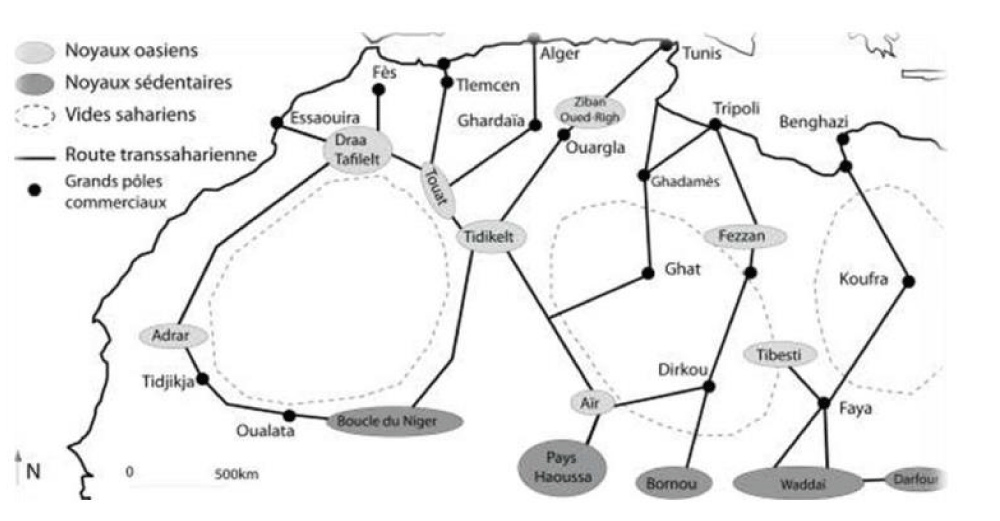
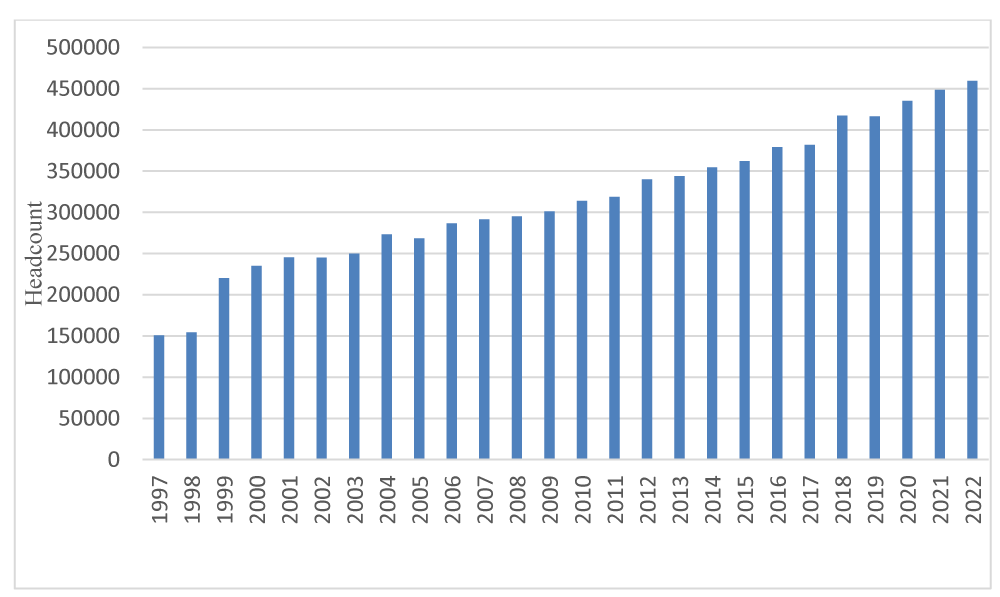
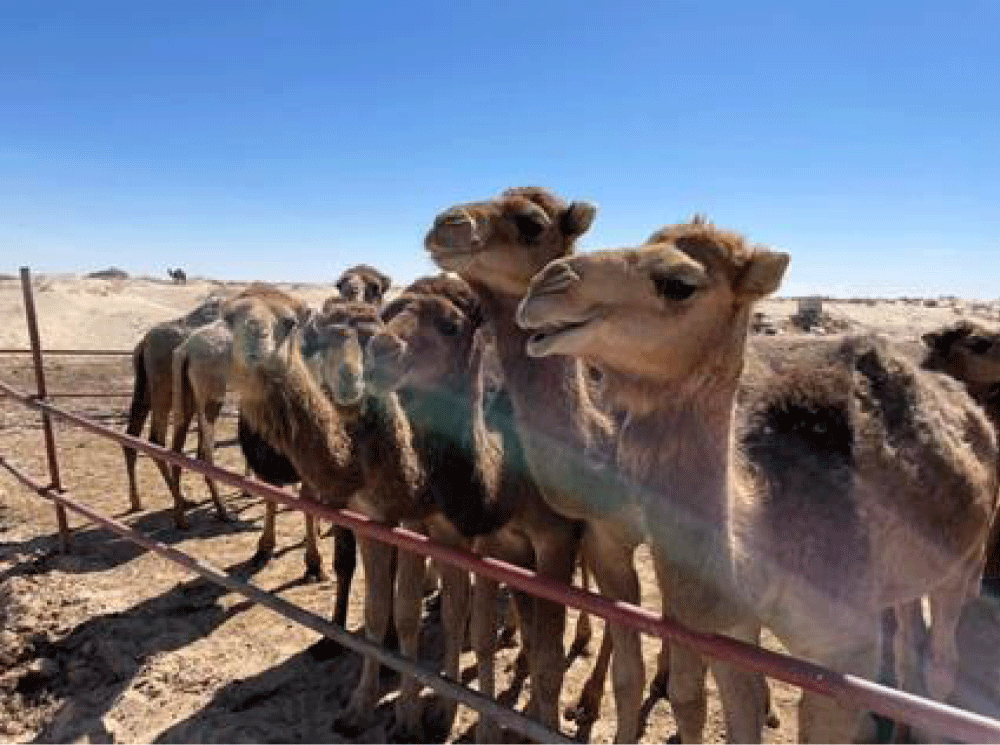
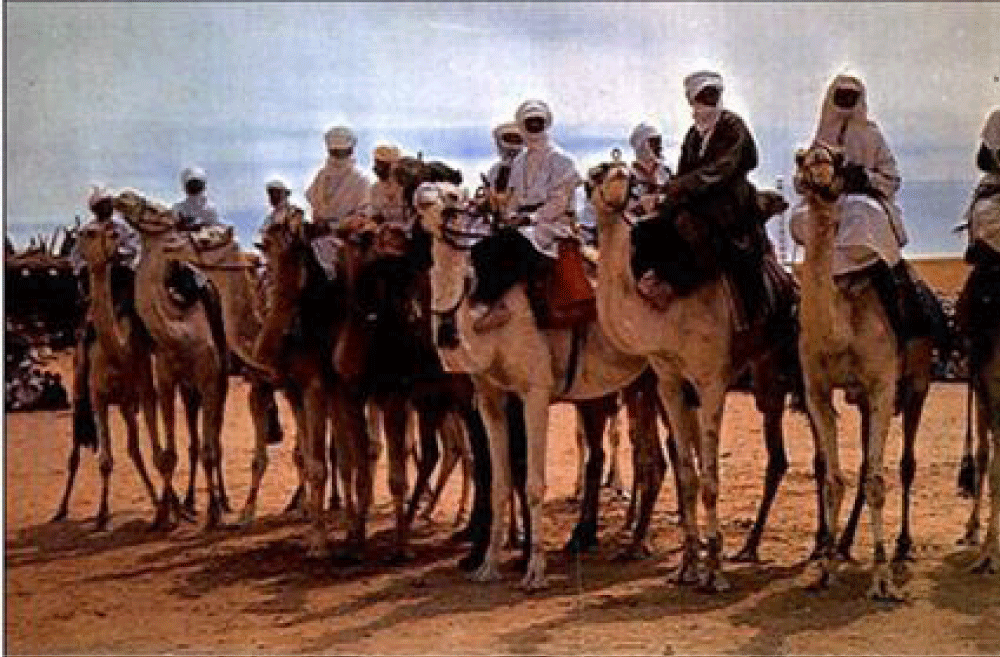
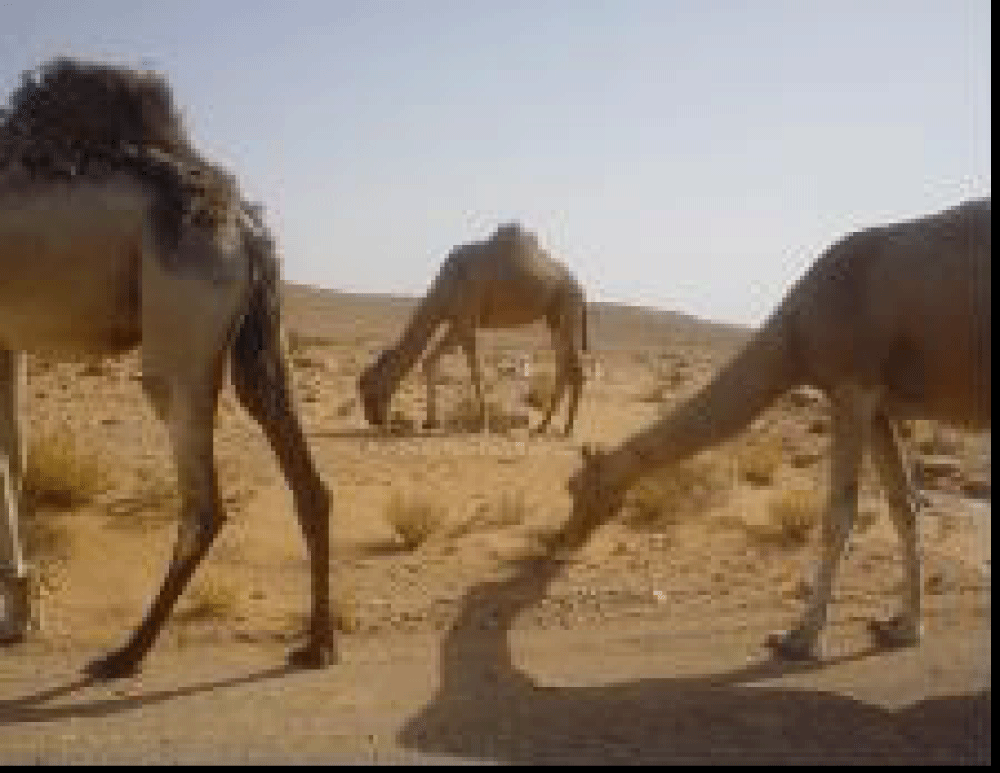
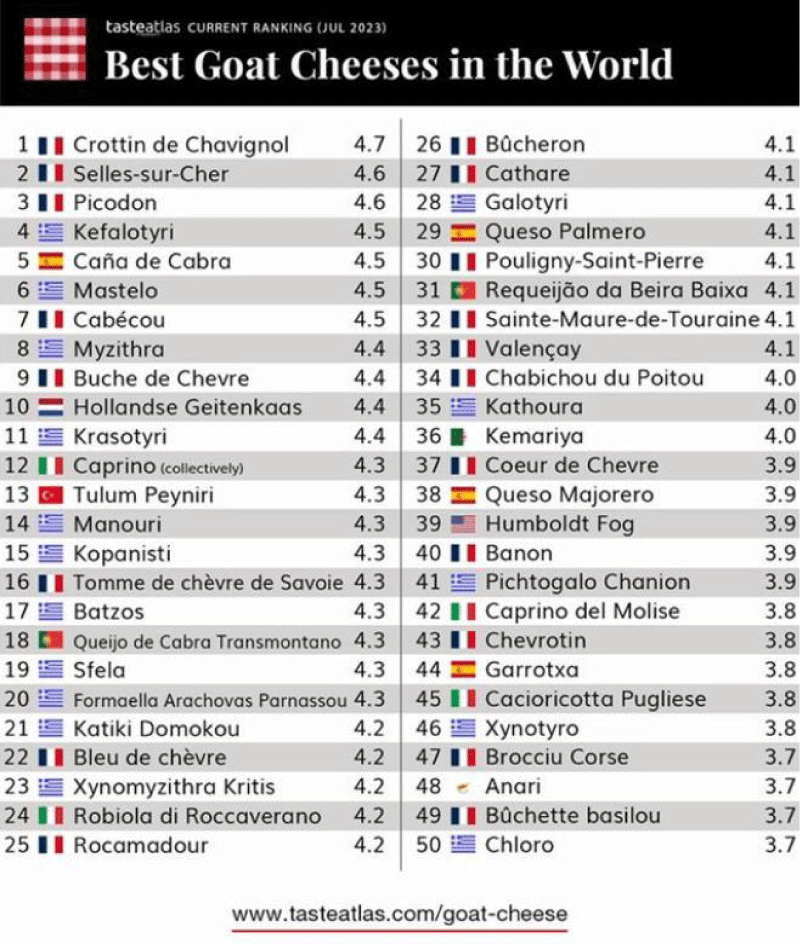
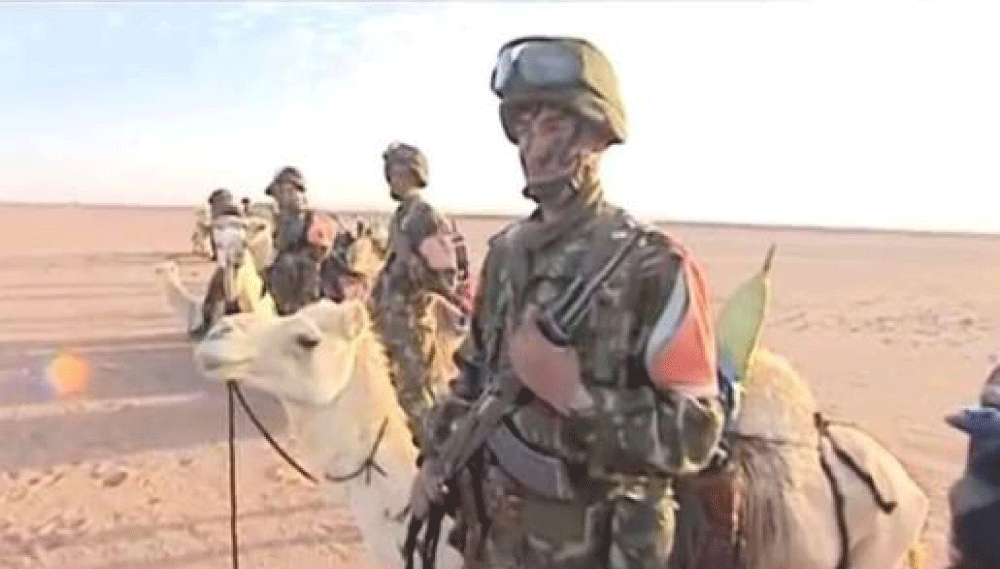


 Save to Mendeley
Save to Mendeley
